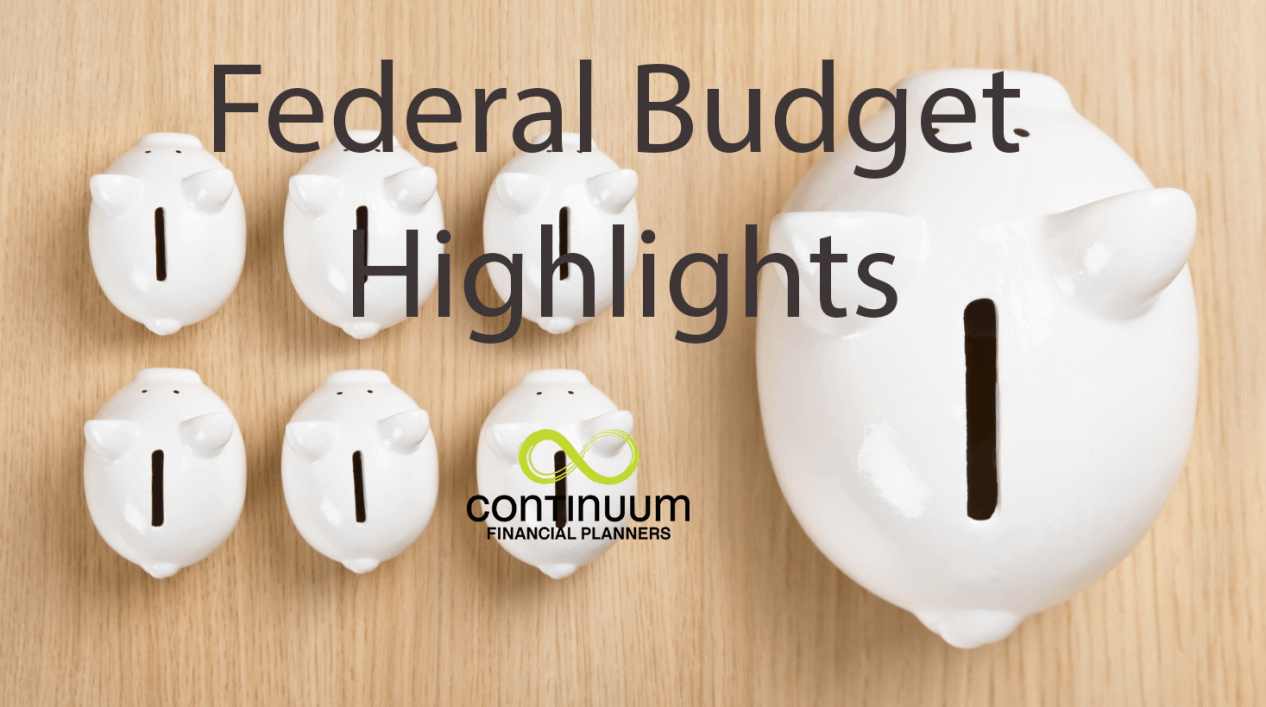The Budget Highlights 2013 presented below, were extracted from the 2013 Budget announcements by the Federal Treasurer, as likely to be of interest to our readers. We invite comments on any of the measures and, as usual, are available to review any that directly affect you to assess their impact on your wealth management (including estate planning) strategies.
Budget Highlight: Taxation Measures –
Replacement of existing Baby Bonus
From 1 July 2014, the existing Baby Bonus scheme will be removed. Instead, for families eligible for Family Tax Benefit Part A (FTB Part A), increased benefits of $2,000 will be paid in the year following the birth (or adoption) of a child, and a $1,000 increase for second or subsequent children. The additional amounts will be paid as an upfront payment of $500 with the remainder to be spread over the next seven fortnightly payments.
The increase in Family Tax Benefit Part A will not be available for parents who have taken up the Paid Parental Leave option, but they will qualify for improved access to the Paid Parental Leave for subsequent children.
As an additional measure to make it easier for working mums with children born in close succession to qualify for Paid Parental Leave for subsequent children, the government will allow parents to count periods of government paid parental leave as work under the work test.
Increase in the Medicare levy for DisabilityCare Australia
As announced in the lead up to the Federal Budget, the Government will increase the rate of the Medicare levy by 0.5% from 1.5% of taxable income to 2.0% of taxable income with effect from 1 July 2014. This increase will be used to fund DisabilityCare Australia (previously known as the national disability insurance scheme or NDIS).
This increased levy will apply to all taxpayers who are subject to the Medicare levy based on their taxable income, and will result in a reduction of after tax income. The following table shows the additional amount of overall tax that will be payable on certain levels of taxable income.
| Taxable Income | Impact of 0.5% increase in Medicare Levy |
| $50,000 | $250 |
| $80,000 | $400 |
| $110,000 | $550 |
| $140,000 | $700 |
| $170,000 | $850 |
| $200,000 | $1,000 |
Limitations on deductions for work-related self education expenses
Effective from 1 July 2014!
Announced on 13 April 2013, an annual cap on the deduction for work-related self education expenses will apply from 1 July 2014. Deductions will be limited to $2,000 per annum. This could have a significant impact for you where those education expenses include travel and accommodation costs, and where they may include post graduate studies.
Net Medical Expenses Tax Offset
After making significant reforms to the Net Medical Expense Tax Offset (NMETO) in the 2012 Budget, the Government has now decided that effective from 1 July 2013 the NMETO will be phased out completely.
Whilst the NMETO will continue to be available until 30 June 2019 for out of pocket medical expenses related to disability aids, attendant care or aged care expenses, it will only be available for the year commencing 1 July 2013 if a claim is made for the current year (ie the year ended 30 June 2013).
Changes to age eligibility for Family Tax Benefit Part A (FTB Part A)
From 1 January 2014, the age at which Family Tax Benefit Part A payments will cease in respect of children aged 16 and over will change. Payments will cease at the end of the year when the child completes schooling.
Individuals who no longer qualify may instead be eligible to receive the Youth Allowance.
Monthly PAYG instalments – extension to other large entities
The Government will extend the requirement to make monthly Pay As You Go (PAYG) income tax instalments to include all large entities in the PAYG instalment system. This will include superannuation funds, trusts, sole traders and large investors which will result in their payment of tax being brought forward.
Non-corporate entities with turnover of $20 million or more will move to monthly PAYG instalments from 1 January 2017.
Deferral of changes to personal income tax regime
Deferred beyond 1 July 2015 until certain requirements met!
Another budget measure announced in the week before the 2013 Budget: the changes to personal marginal tax rates and thresholds has been deferred from their intended start date of 1 July 2015. Funding for these changes was linked to the price for carbon and the revenue expected to be generated from the Carbon Pricing Scheme. As the projected price of carbon is lower than initially expected, the changes in personal tax rates and thresholds will not commence until the price of carbon in a future Budget is estimated to be above $25.40. Based on current projections, this will not be until at least 1 July 2018 and may be later.
The current and future thresholds are shown in the following table:
| Current marginal tax scales | Future marginial tax scales when carbon price threshold reached | ||
| Taxable income | Marginial tax rate | Taxable Income | Marginial Tax Rate |
| $0 – $18,200 | 0% | $0 – $19,400 | 0% |
| $18,201 – $37,000 | 19% | $19,400 – $37,000 | 19% |
| $37,001 – $80,000 | 32.5% | $37,001 – $80,000 | 33% |
| $80,001 – $180,000 | 37% | $80,001 – $180,000 | 37% |
| $180,001 and above | 45% | $180,001 and above | 45% |
* Table excludes Medicare levy
Whilst not specifically stated, it is expected the previously announced and legislated changes to the low income tax offset will also be deferred until the same thresholds are reached.
Changes for non-resident taxpayers on sale of Australian property
With effect from 1 July 2016, where a non-resident sells a property located within Australia, a new (non-final) withholding tax regime will apply. This measure is designed to ensure that the appropriate amount of tax is recovered by the Australian Government on taxable capital gains that arise when such properties are sold.
These measures will apply to all Australian taxable property, other than:
- where the property is owned and sold by an Australian resident (ie it applies to non-resident taxpayers only)
- residential properties valued at less than $2.5 million.
Under this measure, the purchaser of the property will need to withhold 10% of the purchase price and forward it to the ATO as a form of withholding tax. As a result, the vendor will only receive 90% of the sale proceeds up-front. They will need to lodge a tax return if they want to receive any of the remaining 10%.
Removal of discount for early HELP payments
Currently discounts are available for up-front and voluntary payments made under the Higher Education Loan Program. These discounts currently are: 10% for students electing to pay their student contribution up-front; and 5% on voluntary payments to the ATO of $500 or more.
From 1 January 2014, these discount arrangements will be removed.
Budget Highlight: Aged Care Measures –
Pilot programme for Age Pension recipients downsizing their principal residence
An important Budget 2013 measure announced was that the Government will implement a 3 year pilot programme aimed at removing the Social Security disincentive for Age Pension recipients to downsize their principal residence. Under this measure, up to $200,000 of the proceeds from a principal residence sale may be deposited into a ‘special account’ (providers must be an authorised deposit taking institution, but other details are currently unknown). These accounts (including future earnings) will receive an exemption from Age Pension income and assets tests for up to 10 years.
To obtain access to the scheme, the following requirements must be met:
- At least 80% of the ‘excess’ sale proceeds (up to $200,000) must be deposited into a ‘special account’
- The principal residence sold must have been owned by the Age Pension recipient for at least 25 years
- The Age Pension recipient must move into a new principal home, granny flat, or retirement village (i.e. it is not available to those who move into residential aged care)
- The means test exemption ceases if the account holder makes any withdrawals from the account.
Budget Highlight: Retirement Income Stream matters –
No extension of draw-down relief for income streams
The Government has not announced any further extension of the minimum draw down relief for superannuation income streams. In recognition of the constrained markets at the time, over the last few years the Government has granted relief on minimum pension payment drawdowns, with a 25% reduction applying to the current financial year.
Minimum pension drawdowns will return to their standard level from 1 July 2013 as shown in the following table:
| Age of beneficiary at 1 July | Current minimum percentage | Minimum percentage from 1 July 2013 |
| Under 65 | 3% | 4% |
| 65 -74 | 3.75% | 5% |
| 75 -79 | 4.5% | 6% |
| 80 – 84 | 5.25% | 7% |
| 85 – 89 | 6.75% | 9% |
| 90 – 94 | 8.25% | 11% |
| 95 or more | 10.5% | 14% |
Budget Highlight: Superannuation matters –
Changes to excess concessional contributions
From 1 July 2013, individuals will have the ability to withdraw any excess concessional contributions and have them taxed personally at their marginal tax rate. An interest charge would also apply to the excess amount, reflecting the delay in the collection of the relevant tax by the Australian Taxation Office (ATO).
This will replace the current limited withdrawal option which is only available where clients exceed their cap by less than $10,000 and is only available once. The new measure can be used each time a client exceeds their concessional contributions cap.
Applies to excess concessional contributions made from 1 July 2013
Changes to concessional contribution caps
From 1 July 2013 a higher concessional contribution cap of $35,000 will apply to people aged 60 and over. This higher cap will then become available to people aged 50 and over from 1 July 2014.
This cap will not be indexed in future years, and it is projected that the existing $25,000 concessional cap will reach $35,000 in July 2018. At that time, the same cap will again apply to everyone regardless of age.
Whilst this higher cap is less than that previously due to come into effect from 1 July 2014 (being $50,000), the requirement to have less than $500,000 in total superannuation savings has been removed.
Changes to tax free treatment of superannuation in pension phase
Effective from 1 July 2014, the existing tax free treatment applying to assets supporting a superannuation income stream will be limited to the first $100,000 of earnings on those assets. Any earnings above that limit will be subject to the standard 15% tax rate applying to complying superannuation funds. The $100,000 threshold will be indexed to CPI and increase in $10,000 increments. Transitional rules will apply in respect of capital gains that accrue on assets acquired before the commencement of this measure (ie pre 1 July 2014).
Whilst not providing details on how this tax will be collected when it applies, the Budget announcements have confirmed that the $100,000 threshold applies across all pension accounts held by an individual – not per pension account.
Budget Highlight: Centrelink benefit/ allowance matters –
Deeming superannuation account based income streams
Effective for new income streams commencing from 1 January 2015: For Centrelink income test purposes, superannuation income streams are concessionally treated as a result of the calculation of a “deductible amount” that reduces the income amount assessed for benefit calculation purposes.
This concession will continue indefinitely for existing income streams. However, new superannuation account-based income streams starting on or after 1 January 2015 will be assessed under deeming arrangements applying to other financial investments.
This change is in line with a recommendation from the previous Australia’s Future Tax System Review (Henry Review), and was previously announced on 5 April 2013.
Increased level of income before allowance payments reduced
Effective from 20 March 2014: Currently, allowance recipients can earn $62 per fortnight before there is reduction in the amount of the allowance payment they can receive. For the first time in over ten years, this threshold will be lifted. With effect from 20 March 2014, the threshold will increase by $38 per fortnight to $100 per fortnight.
In addition, from 1 July 2015, this new $100 threshold will also be indexed annually in line with movements in the CPI.
The payments impacted by these changes are Newstart Allowance, Sickness Allowance, Parenting Payment Partnered, Widow Allowance, Partner Allowance Benefit and Partner Allowance Pension.
Getting the most from Budget Highlights 2013
Clients and our readers generally are invited to contact us at any time to discuss any of the proposed budget measures that may impact their financial position. To speak/ meet with one of our team, call 07 3421 3456, or complete the online Contact Us form


